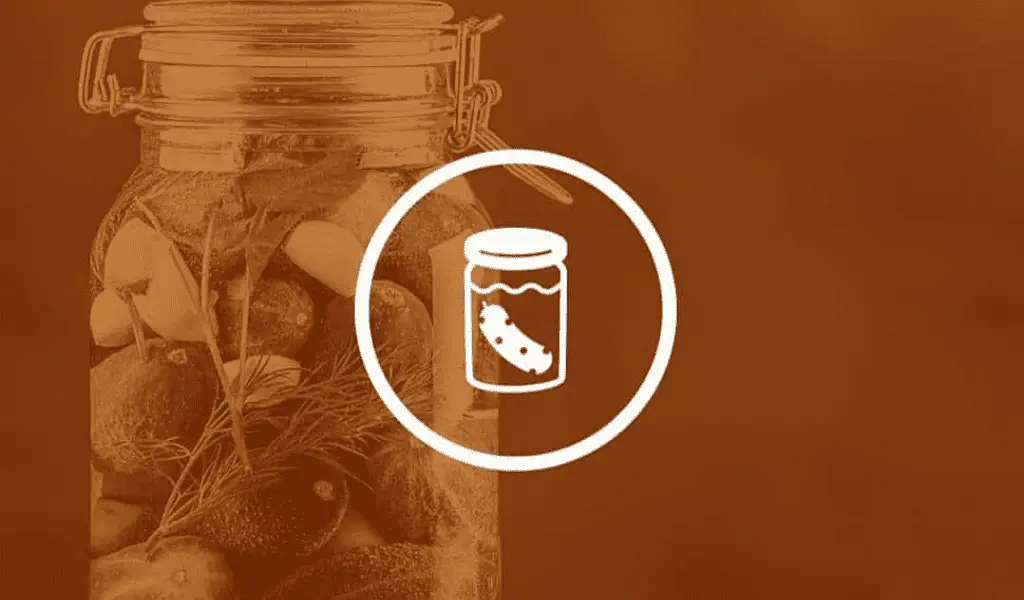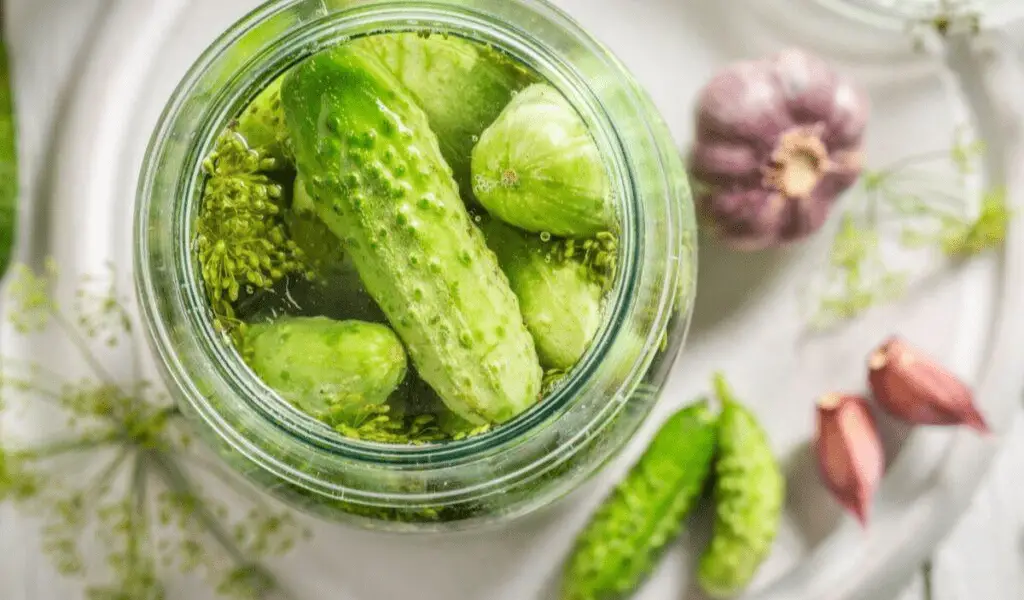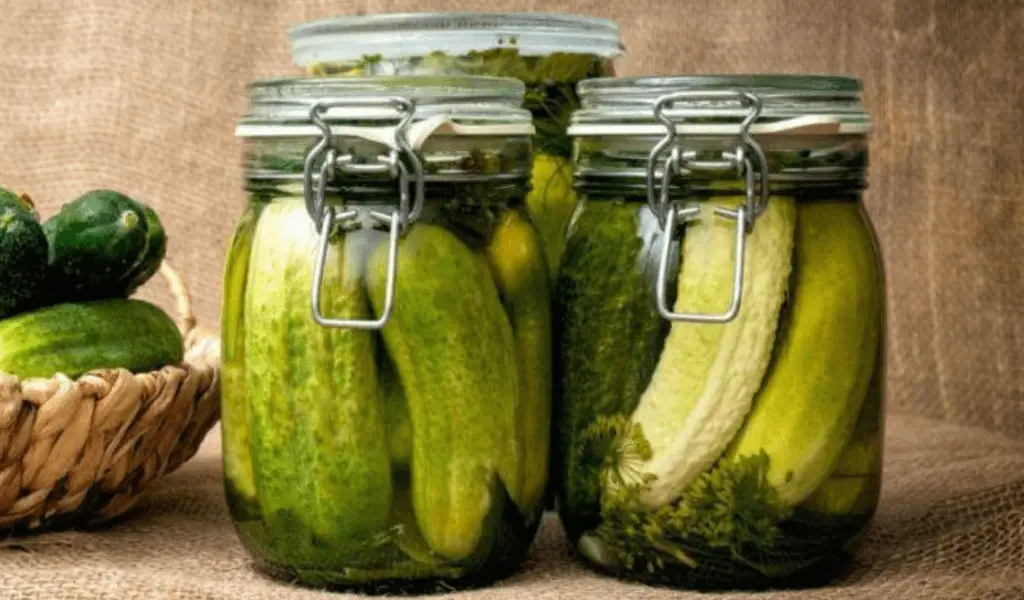
Going for the whole pickling experience? Well, you’ve got a decision to make: Can you pickle whole cucumbers, or do you have to slice them up first? Here’s how cutting or not cutting up a pickled cucumber really affects a pickle’s final form and flavor.
You can pickle regular cucumbers instead of slicing them first. Whole cucumbers tend to become crisper pickles but take longer to process the uncut skin making it tougher for the brine to penetrate the entire vegetable. Conversely, sliced pickled cucumbers are softer but take less time to pickle.
Let’s explore the pickling process of America’s favorite snack – from cucumbers to finished pickles. We’ll look at various factors that make a difference in how long it takes, as well as uncover different methods of achieving crunchy and tangy deliciousness.

HOW LONG DOES IT TAKE TO TURN A CUCUMBER INTO A PICKLE?
It can take anywhere from 3 days to 6 weeks for a cucumber to turn into a pickle, depending both on your pickle recipe and the size of the cucumbers. Some recipes take a week or less to turn cucumbers into pickles, though most take 3 to 4 weeks.
Larger cucumbers will naturally take longer than small ones, and whole cucumbers will take longer than cut ones. This is because the brine and the pickling spices will need time to permeate the cucumber and break it down to turn it into a pickle.
This can work faster than the bigger ratio of surface area to volume of the cucumber slices or cucumber pieces is. The greater the surface area, the more coverage it will get from the brine, and the lower the volume, the less work the brine will have to do to reach the center. So, sliced cucumbers will pickle faster than whole ones.
Depending on the recipe, the brine might also have to break down the spices for them to flavor the pickles. Generally speaking, salt has a much easier time permeating things than any other spice. The other spices in your pickling brine will have to dissolve and disperse into the brine before they can follow the salt into the pickles.
That puts a cap on how quickly you can get a pickle with the flavor you want. Slicing the cucumbers as thin as paper won’t make them soak up the pickled flavor faster than the spices can move.
The temperature of the air around the jar will also affect the process, though this is usually addressed in the recipe that you use. The jars should be kept at room temperature while pickling: between 65 and 75 degrees Fahrenheit. If you keep the jars in a place that’s colder than that, they will take longer to pickle.

WHAT IS THE PROCESS OF PICKLING CUCUMBERS?
All methods of pickling cucumbers involve putting the cucumbers in a jar with some brine and waiting for that brine, as well as some good bacteria, to break down the cucumber until it becomes a pickle. There are a few different methods on how to pickle cucumbers, though each has a different objective.
3 Methods of Pickling Cucumbers
The different methods of pickling might either focus on the speed or simplicity of making the pickles, while others try to make the best product, looking for either a specific taste or texture.
METHOD 1: QUICK & EASY PICKLES
The fastest type of pickle to make is the refrigerator pickle. Refrigerator pickles can be done in 5 to 7 days, but unlike other pickles, they have to be kept in the fridge to stay good, even before opening the jars.
Follow these simples steps to make pickles in this way:
- Cut up the cucumbers and put them in a jar with a brine of vinegar (some may choose to use apple cider vinegar), salt, sugar, fresh dill (or dried dill), garlic, and onion, though you may choose a recipe with different spices.
- Close the lid tightly and place in your refrigerator.
- Then shake the jar a couple of times every day until the day they’re ready.
Recycled pickles are also easy to make and quick to finish, though they’re not necessarily pickles as they are pickle-flavored cucumbers. They’re called recycled pickles because you literally just put the sliced cucumbers into the pickle juice that is left over from your last jar of store-bought pickles. It doesn’t take long for the flavor to set in, but they’re not true pickles.
METHOD 2: FRESH-PACK PICKLES
If you want to preserve the crispness of the cucumbers, then fresh-pack pickles might be worth a try. Also called quick-process pickles, this method requires a water canner.
- You’re first going to soak the cucumbers in an initial water and salt brine for 12 hours.
- After that, you can drain them and mix up the vinegar brine that will go in the jars.
- Then you’re going to heat the vinegar brine until it starts boiling and pour it over the cucumbers in the jars, leaving half an inch of headspace.
- Then, after putting the lids on, you’ll process them in the boiling water canner. This will take 10 minutes for pint jars and 15 minutes for quart jars.
- After that, you’ll need to let the jars sit for a few weeks before the pickles are ready to eat.
METHOD 3: LACTO-FERMENTED PICKLES
A common way to pickle cucumbers is through Lacto-fermentation, which relies on probiotic bacteria called Lactobacillus to help with the process. The bacteria create lactic acids and make the pickles taste great.
Ideally, you will want a double bubble airlock to put on the jar when you make these pickles, but you can do it without that as long as you’re willing to “burp” the jars every day or so to release the gases. You’re also going to need a weight to keep the pickles in the brine.
To make pickles in this manner:
- The first thing you’re going to want to do is sterilize your mason jar in the dishwasher.
- While the dishwasher is running, you can prepare your spices, brine, and pickles.
- If you want your pickles to be crisp, put a bay leaf, grape leaf, or oak leaf in the mixture along with the spices.
- When the jar is sterilized, add your spice mixture, leaf, and cucumbers to the jar.
- Then pour in the brine until you have 1 to 2 inches of headspace.
- Put the weight on top to push the pickles into the brine.
- At this point, you can either put on the lid or the airlock. If you use a lid instead of an airlock, you will need to open the lid every 1 to 2 days to release the CO2 created by the bacteria.
SO, WHO’S HUNGRY?
No matter what type of pickles you prefer, there’s a method for making them. Whether you want to make refrigerator pickles in just 5-7 days or lacto-fermented ones that require more time and patience, the choice is yours, but you can’t go wrong.
With so many methods available, it’s easy to find one that fits your tastes and lifestyle. So why not try out all three?
And if this has your interests and taste buds piqued for more adventure, be sure to check out our guide on how to brew kombucha. It’s fascinating, and fun, and rewards you with a delicious and gut-healthy drink in the end.
